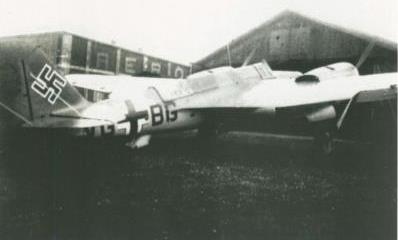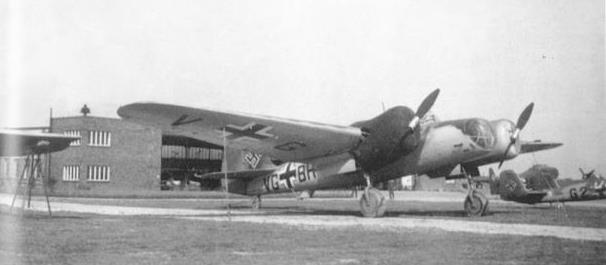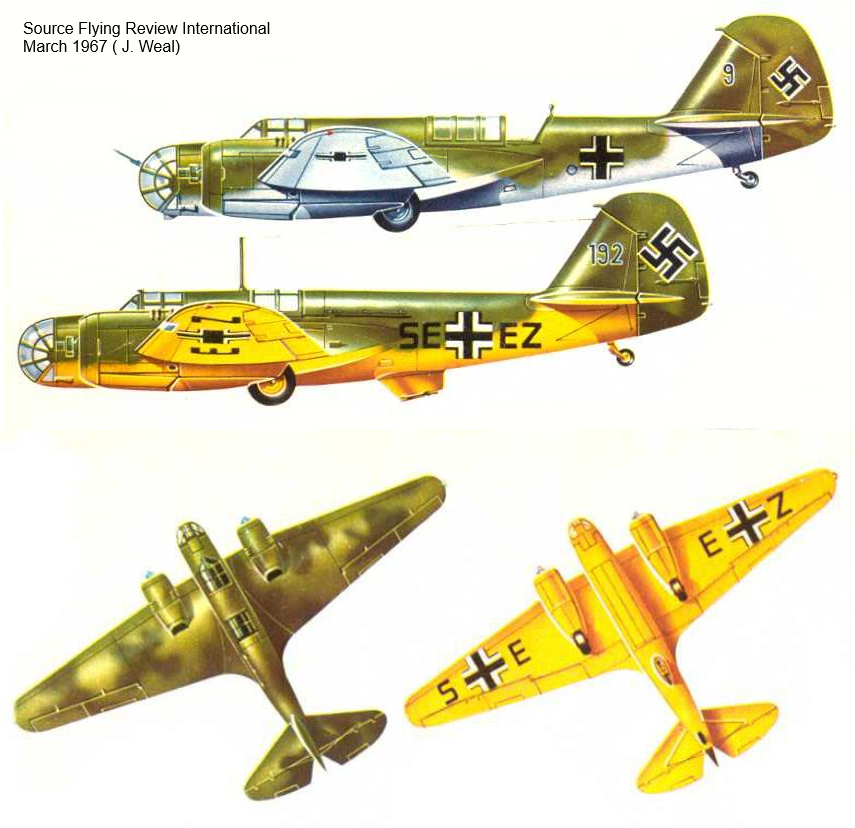| Type |
3-seat medium bomber |
| Engine |
2 Klimov M-103 with 3-bladed variable-pitch propellers |
| Dimensions |
Length 12,57 m , height 3,6 m, span 20,33 m , wing area 56,7 m2 airfoilroot: TsAGI-6 mod. (16%); tip: TsAGI-6 mod (12.5%) |
| Weights |
Empty 4768 kg, loaded 6308 kg , max. take off weight 7880 kg |
| Performance |
Max.. speed 450 km/h at 4100 m, cruising speed , range 2300 km , endurance , service ceiling 9300 m , climb to 1000 m 1 min. 48 sec., to 9000m 32 min. |
| Armament |
4 x 7.62 mm ShKAS machine guns (two in nose, one in dorsal and one in ventral position) ,bombs: 6 x 100 kg or six 50 kg bombs in bomb-bay, 2 x 250 kg bombs on wing racks |
Late in 1936, the Czechoslovak Government, anxious to modernize its bombing force, entered into an agreement by which Czechoslovakia received a batch of 30 SB-2s together with a manufacturing licence from the Soviet Union in exchange for specimen examples and the manufacturing rights to the Skoda C5 7,62 mm mountain gun. The Czech SB-2s were to be powered by Avia-built Hispano-Suiza l2Ydrs engines of 860 hp, these being essentially similar to the standard M-l00As which, too, were licence-built derivatives of the French Hispano-Suiza engine. The Czechoslovak designation B 71 was applied to the SB-2, and the first Russian-built airframe arrived in Prague where it was fitted with its Avia-built engines and flown on April 17, 1937. Subsequently, Avia sent the HS 1 2Ydrs engines to the Soviet Union where the remaining 29 aircraft (B 71.2 to B 71.30 inclusive) were completed and ferried to Czechoslovakia.
Production of the SB-2 was initiated in Czechoslovakia in 1937, the original plans calling for 40 (B 71.62 to B 71.101) to be built by Letov, 50 (B 71.102 to B 71.151) to be built by Aero. and 70 (B 71.152 to B 71.221) to be built by Avia. In the event, a cLIt-back in orders in the autumn of 1938 resulted in the Letov plant being eliminated from the programme, but Aero went on to complete 45 of the 50 machines that it was scheduled to produce, Avia completing a further 66 machines to bring Czech SB-2 production to 111 machines; a proportion of these were completed after the German occupation of Bohemia and Moravia and the dissolution of the Czechoslovak Republic in March 1939. Forty-two of these were delivered to the Bulgarian Air Force in 1939-40, being known by this service as the "Avia-Katusa M-8", and the bulk of the remainder were sequestered by the Luftwaffe which took over both Czech- and Russian-built SB-2s which had served with the Czech 5th Air Regiment at Brno and the 6th Air Regiment at Nemecky Brod (now Havlickuv Brod). A number of these were employed by the Luftwaffe as crew trainers, but the majority served in the target-tug role with the Fliegerzielgeschwader 1 and several of the nine autonomous Fliegerzielstaffel,i,. One Avia-built SB-2 served with the Slovak Air Force until August 1944 when its crew flew the aircraft from the Trencin airfield to Turkey, subsequently reaching England and joining the Free Czech Air Force.
W.hen German forces invaded the Soviet Union in June 1941, the SB-2 and SB-2bis, and their dive-bomber derivative, the Ar-2, equipped the bulk of VVS bomber squadrons, but the margin of performance superiority enjoyed by the SB-2 when it first appeared over Spain in 1936 no longer existed five years later, and Arkhangel'sky's now ageing bomber presented the Luftwaffe's fighters with few problems. Whereas over Spain the SB-2 relied on a combination of speed and altitude to evade interception, attacking its objective from high altitude and then turning and diving for home, similar tacties being employed over China, such methods proved less efficacious over the Ukraine where the Luftwaffe enjoyed almost undisputed aerial superiority, for the German fighter arm had also taken the lessons of the Spanish Civil War to heart. The lack of armour and light defensive armament of the SB-2 and SB-2bis rendered the Soviet bombers easy meat for the Bf 109F and Fw 190A, and the VVS was forced to adopt low-level tactics, becoming targets for the very efficient German light flak. The attrition suffered by SB-2-equipped units was such that, apart from isolated incidents, the Arkhangel'skydesigned bomber had virtually disappeared from Russian skies in which Luftwaffe fighters were likely to be encountered in strength by the summer of 1942.
Like so many other VVS formations, a large proportion of the SB-2-equipped units had been deployed too far to the West, and hundreds were destroyed on their airfields during the initial German onslaught. Others were abandoned undamaged in the face of the Wehrmacht's rapid advance, and it is odd to relate that on the one front where the SB-2 lingered in VVS service well into 1943, Russian Karelia, the elderly bomber was operated by both sides! A number of SB-2bis bombers captured intact by the Wehrmacht in the Ukraine were overhauled and sold to Finland. In Finnish service they were employed primarily for maritime reconnaissance and anti-submarine duties by TLeLv 6 alongside such antiquities as the Blackburn Ripon 11 and Norwegian-built M.F.1l float biplanes and Dornier Do 22 float monoplanes. One SB-2bis of TLeLv 6 (VP- 10) was officially credited with the destruction of no fewer than four Russian submarines.

















